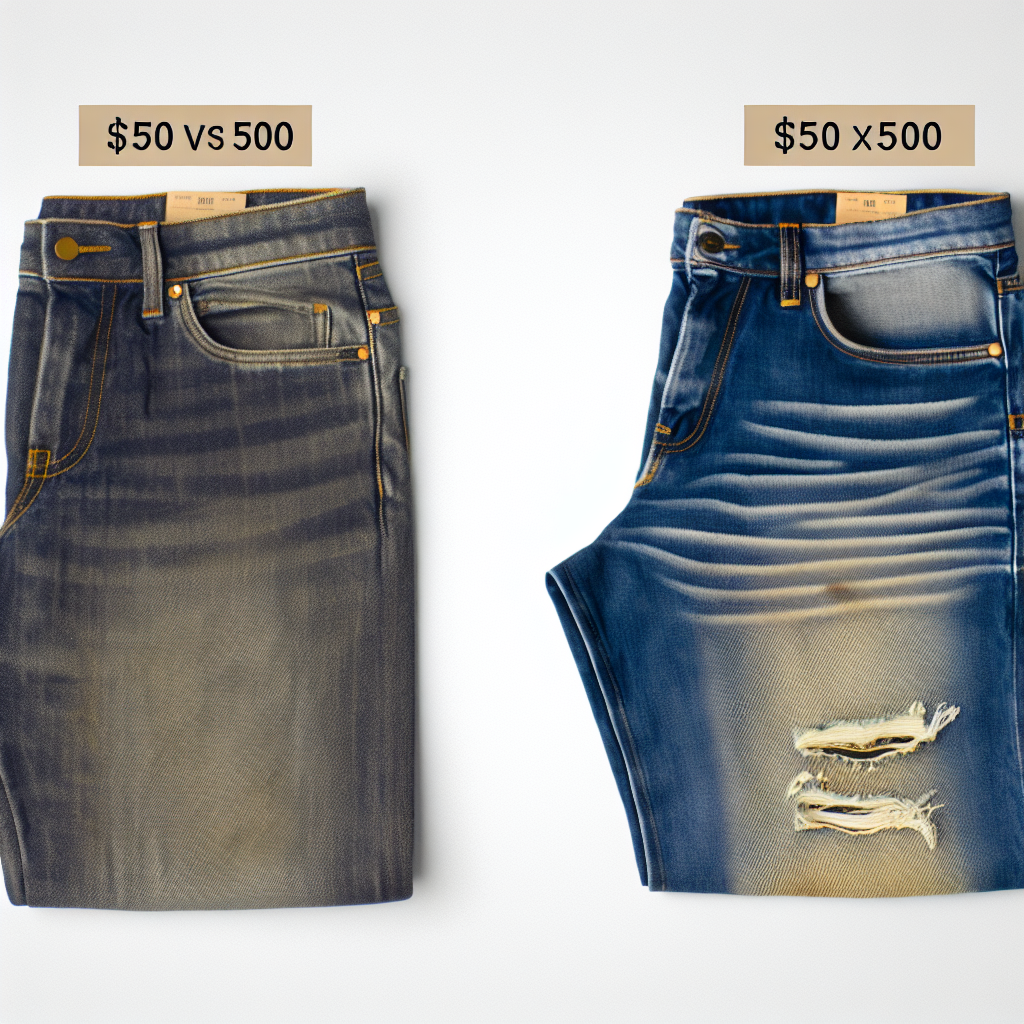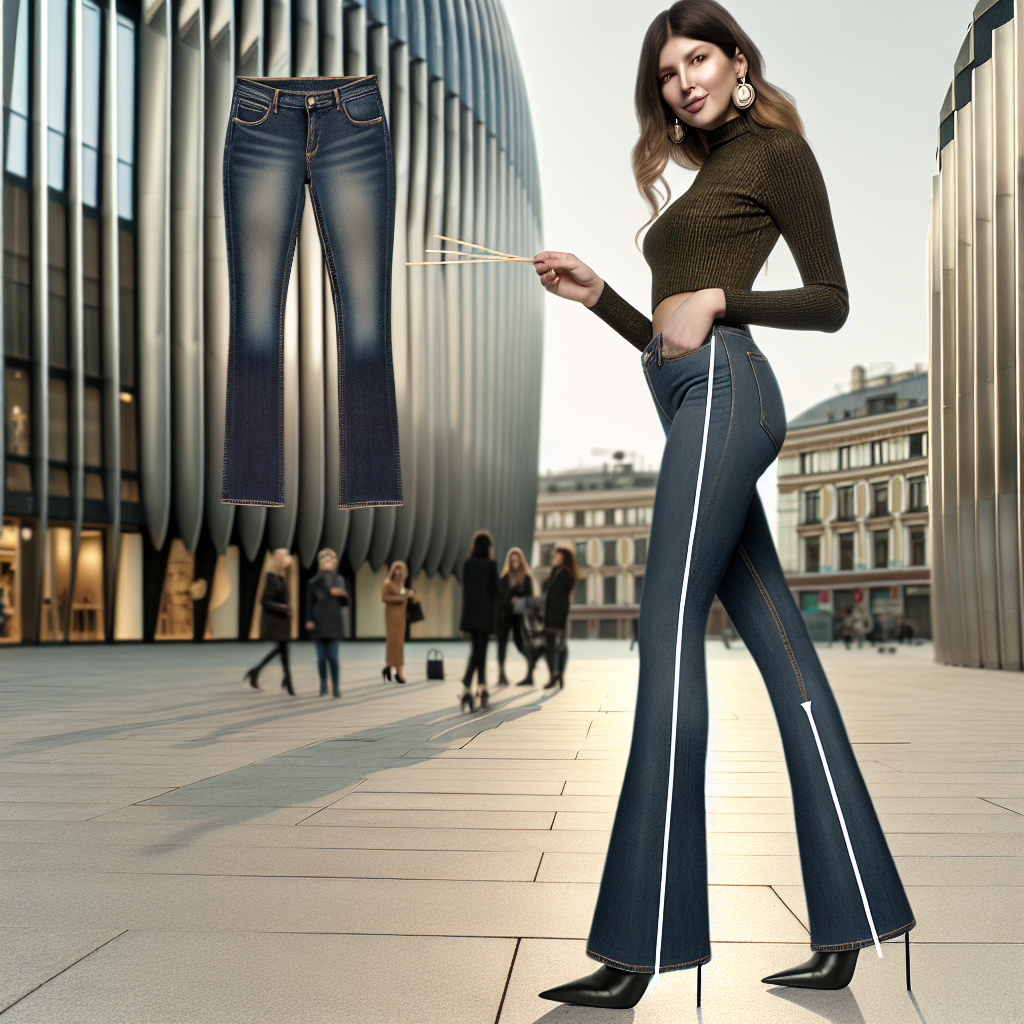What’s the Difference Between $50 Jeans and $500 Jeans?
Introduction
Denim may be a wardrobe staple for virtually everyone, but the price ranges for a seemingly simple pair of jeans can be staggering. Walk into a department store or scroll online and you’ll find jeans priced as low as $20 and as high as $1,000 or more. But what truly separates affordable denim from its high-end counterparts? Is it all just branding, or are there legitimate differences that warrant spending hundreds of dollars? In this article, we’ll unravel the key factors that distinguish $50 jeans from their $500 designer counterparts.
Fabric Quality: The Foundation of All Denim
Raw vs. Treated Denim
One of the most fundamental differences lies in the fabric itself. Premium jeans often use raw selvedge denim, which maintains its natural form without extensive pre-washing or chemical treatments. This high-quality material is typically sourced from reputable mills in Japan, Italy, or the United States. The raw quality allows jeans to mold to the wearer’s body over time, creating a custom fit and unique wear patterns.
On the flip side, most $50 jeans are made of pre-treated or synthetic-blend denim designed for mass production. These materials may include stretch fibers like elastane or polyester, making them more immediately comfortable but less durable in the long term.
Weight and Composition
High-end jeans usually boast a heavier ounce weight—often between 12 to 16 ounces—which signifies robust material. In contrast, budget jeans tend to be lighter (8 to 10 ounces), which can wear out more quickly and lose shape over time.
Craftsmanship and Construction
Attention to Detail
The craftsmanship behind $500 jeans is significantly more meticulous. From reinforced stitching to bar tacking at stress points (like pockets and belt loops), these jeans are built to last years. Some luxury brands even opt for chain-stitching, a time-intensive process that adds durability and aesthetic appeal.
Lower-priced jeans, while functional, are usually manufactured in bulk with less attention to detail. Straight-line stitches and machine-sewn patterns are the standard, which may lead to inconsistencies or faster wear and tear over time.
Seams and Stitching Techniques
Premium denim brands often use intricate stitching techniques like double-needle or selvedge outseam construction, which not only enhances aesthetic appeal but also contributes to durability. Budget jeans often skip these finer details to save on production costs.
Fit and Design Innovation
Another major distinction is the way jeans are cut and styled. Higher-end denim brands invest heavily in design research and ergonomics, targeting a sculpted fit that flatters different body shapes. Custom tailoring features such as darting, tapered legs, and contoured waistbands are common in designer jeans.
Mass-produced jeans often come in more generic sizing and silhouettes. The fit may not be as precise, leading to issues like gaping waistbands, sagging, or bunching in certain areas.
Ethical Manufacturing and Sustainability
Many luxury denim brands emphasize sustainable practices and ethical manufacturing—another reason for the heftier price tag. Factories used by high-end labels often pay fair wages, provide safe working environments, and decrease environmental impact through water conservation and reduced chemical usage.
Conversely, lower-priced jeans are frequently produced in countries with minimal labor regulations, which can exploit workers and negatively affect the environment. Additionally, fast fashion denim contributes significantly to global water waste and landfill overflow.
Brand Prestige and Exclusivity
Brand value cannot be ignored. Buyers often pay a premium for the prestige and recognition that come with luxury brands. Wearing jeans from a renowned label like Gucci, Saint Laurent, or Rag & Bone may serve as a status symbol, offering a sense of belonging in a fashion-forward community.
That said, branded jeans aren’t solely about a logo. Many of these companies invest heavily in design, innovation, and premium materials—justifying their prices to a degree. Still, marketing plays no small role, and some portion of the cost undeniably goes into branding and advertising efforts.
Longevity and Wearability
While $500 jeans may seem like an extravagant investment, they often outlast their cheaper counterparts by several years. The durability, slow aging process, and craftsmanship mean they are less likely to fray, stretch, or fade too quickly. In contrast, $50 jeans may need to be replaced after a season or two due to wear and tear, washing damage, or stretching out of shape.
In short, paying more upfront can translate into long-term savings if you consider cost per wear.
Subjective Value: Style vs. Budget
Ultimately, the choice between $50 and $500 jeans boils down to personal priorities. If you value craftsmanship, sustainability, and exclusivity, investing in designer jeans could be worthwhile. On the other hand, if you’re more about fast fashion, rotating styles, or shopping on a budget, mid-range or affordable jeans still offer accessible denim without compromising basic style and comfort.
There’s also a sweet spot where quality meets affordability. Brands like Levi’s, Wrangler, and Madewell offer durable, stylish denim in the $70-$150 range with decent fabric quality and responsible manufacturing processes.
Conclusion
The difference between $50 jeans and $500 jeans is far more than just a few zeroes on a price tag. From fabric quality and craftsmanship to design innovation and ethical sourcing, luxury denim is crafted with a level of detail that can justify the investment. However, not everyone needs—or wants—to spend that much for a good pair of jeans. Whatever your choice, understanding these differences can help you make informed decisions and possibly elevate your denim game.
So, next time you slip into a pair of jeans, consider what went into making them—and whether that premium price aligns with your values, needs, and lifestyle.











